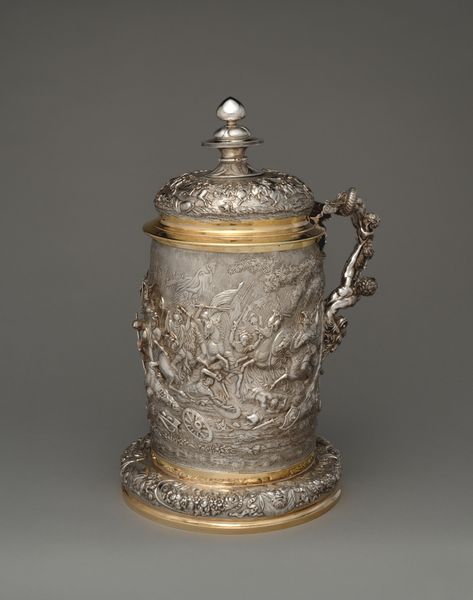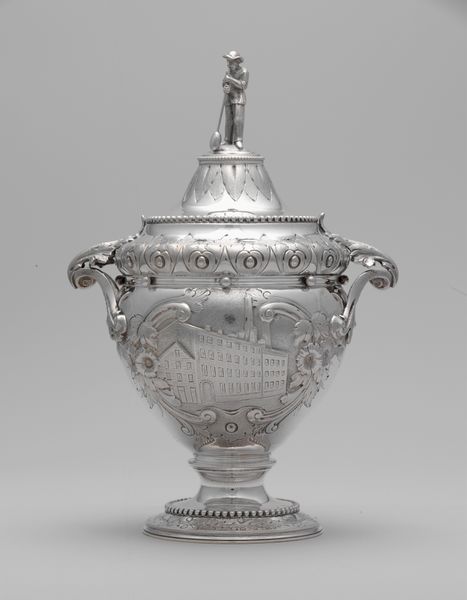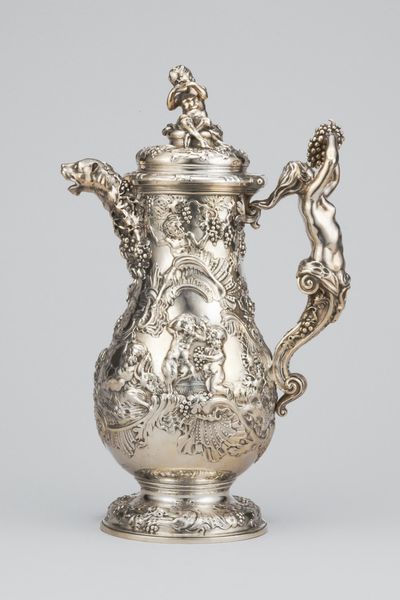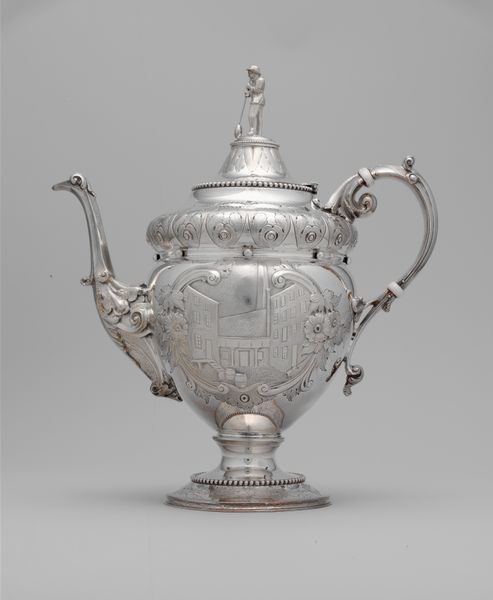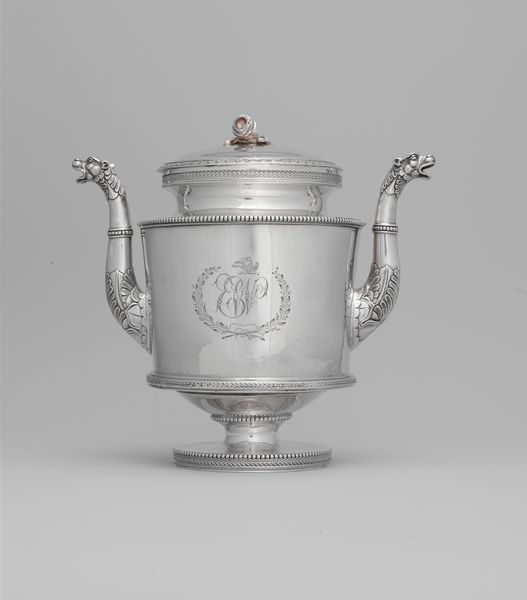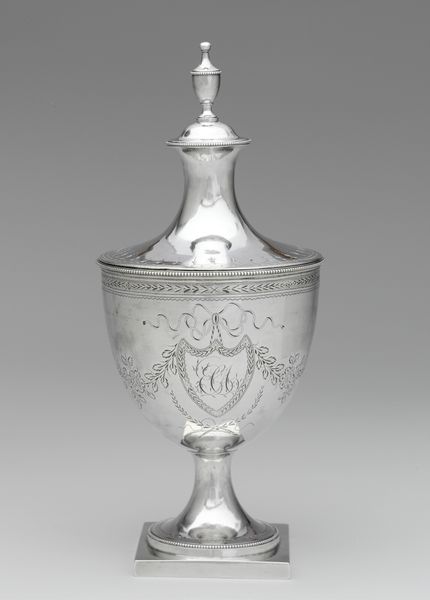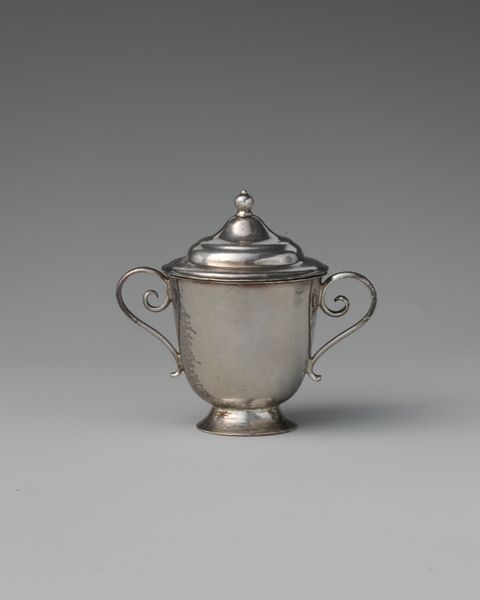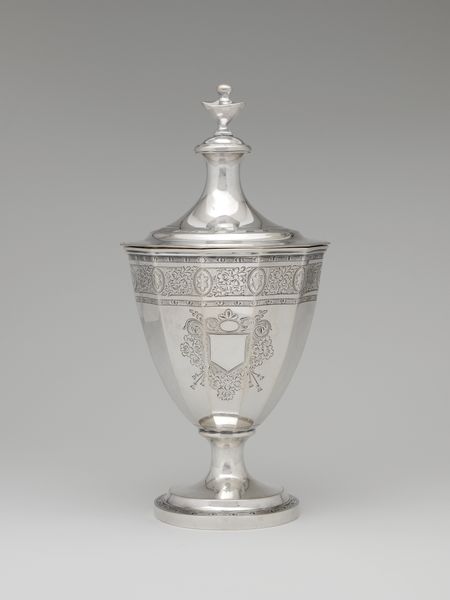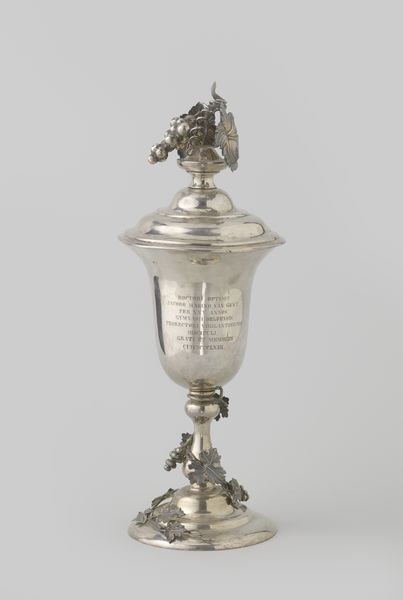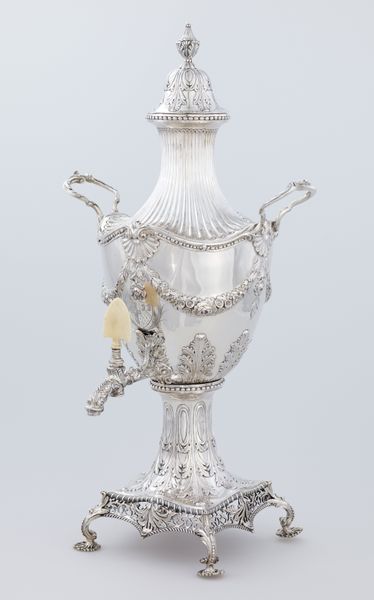
Dimensions: Overall (confirmed): 12 11/16 × 6 5/8 × 7 1/8 in., 44.581oz. (32.2 × 16.8 × 18.1 cm, 1264g)
Copyright: Public Domain
This coffee urn was made by Gerrit Boverhof in the eighteenth century, from hammered and engraved silver. At the time, silver wasn't just a precious material, but a way of storing value, a kind of portable wealth. The body of the urn is raised from a flat sheet of silver through skillful hammering. Look closely, and you can see the planishing marks left behind. It would then have been engraved with floral motifs, adding visual interest and texture. Notice the spigot near the base, allowing hot coffee to be dispensed. Crafting this piece involved highly specialized labor, reflecting the hierarchical structure of workshops and the premium placed on refined artistry. This urn speaks to the rise of coffee culture in Europe, and its association with luxury and status. Silver, a material extracted and traded globally, underscores the links between artistic creation, mercantile exchange, and social display. By considering its materials and methods, we can appreciate the ways this object reflects broader economic and cultural networks.
Comments
No comments
Be the first to comment and join the conversation on the ultimate creative platform.

